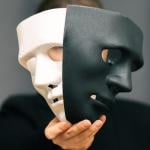ANG LEE, SHOOTING PROSE: Was talking with The Rat today about the “Hulk” movie and the reasons that, although it generally sucked, I was enthralled by its formal innovations. Everyone who saw the movie noticed two gaudy tricks the director, Ang Lee, pulled: comic-book-style panels within panels, dividing the screen into several different pictures; and bizarre dissolves rather than traditional cuts from scene to scene. Lee virtually never (by which I mean, twice) uses these tricks to actually enhance the meaning of the scenes of his movie. Nonetheless, as I said in my “Hulk” review post, I think future directors are going to use his innovations to do incredible things.
And today I realized one of the reasons Lee’s breakthrough formal ideas struck me so much: They replicate some of the strengths of prose, which movies, until now, hadn’t really tried to mirror.
First let’s look at the panels within panels. In one scene, some boring transition is taking place on the lower five-sixths of the screen. I think maybe the Hulk is getting transferred to a military facility or some such thing. So on most of the screen, we’re watching this transition take place. But across the top sixth of the screen, in a long narrow strip of image, the Hulk’s father’s eyes brood over the entire scene.
This is creepy. And it allows us to constantly check the scene against one character’s reactions to the scene, without distracting cuts or pans.
Let’s say I’m writing a three-character scene. Two of the characters are arguing furiously. The third is silent, watching them, responding in his own way. If I want you to pay attention to the third character, it’s very easy. I can inobtrusively mention his actions as I move between the arguing characters’ lines of dialogue. “Adam lifted his eyebrows and shook more Sweet ‘n’ Low into his coffee,” that sort of thing. We look at him and remember he’s there and then move on.
In a movie, this kind of inobtrusive “notice this!” gesture is much harder. If the director cuts away to show Adam’s reaction, our attention is focused too much on him. Instead of watching two things at once–the argument, and Adam’s reaction to the argument–we’re watching a sequence: the argument. Adam’s reaction. The argument. Adam’s reaction. Partly because film is so immersive, it’s hard for us to keep a character in mind if he’s not onscreen.
Lee offers a way around this problem. Instead of cutting away to a reaction shot, he could just park a camera on Adam and devote a small chunk of the screen (boxed away by cartoony panel lines, perhaps) to Adam. Most of the screen would show us the argument; but all the time, in the corner, we’d be aware of Adam watching and responding.
The funky dissolves also mirror a standard prose trick: the evocative verb. Easy example, from a bit of “Judica me Deus” I haven’t posted yet: Two characters, both very drunk, are entering a dorm room. I could say that they walked in, or that they stumbled in, or that they wandered in. Or I could say this: “Colin spilled into his common room, and I sloshed after him.” You get both the uncontrolled motion and the cause of the motion (drinking). Similarly, Lee’s weird dissolves (they’re really hard to describe–if this interests you, go see the movie!) do more than simply move us from scene to scene. They set the tone, the atmosphere. They push the narrative forward while simultaneously reinforcing the movie’s various themes.
So yeah, “Hulk” is a truly lousy movie, but Ang Lee is some kind of half-formed genius.











